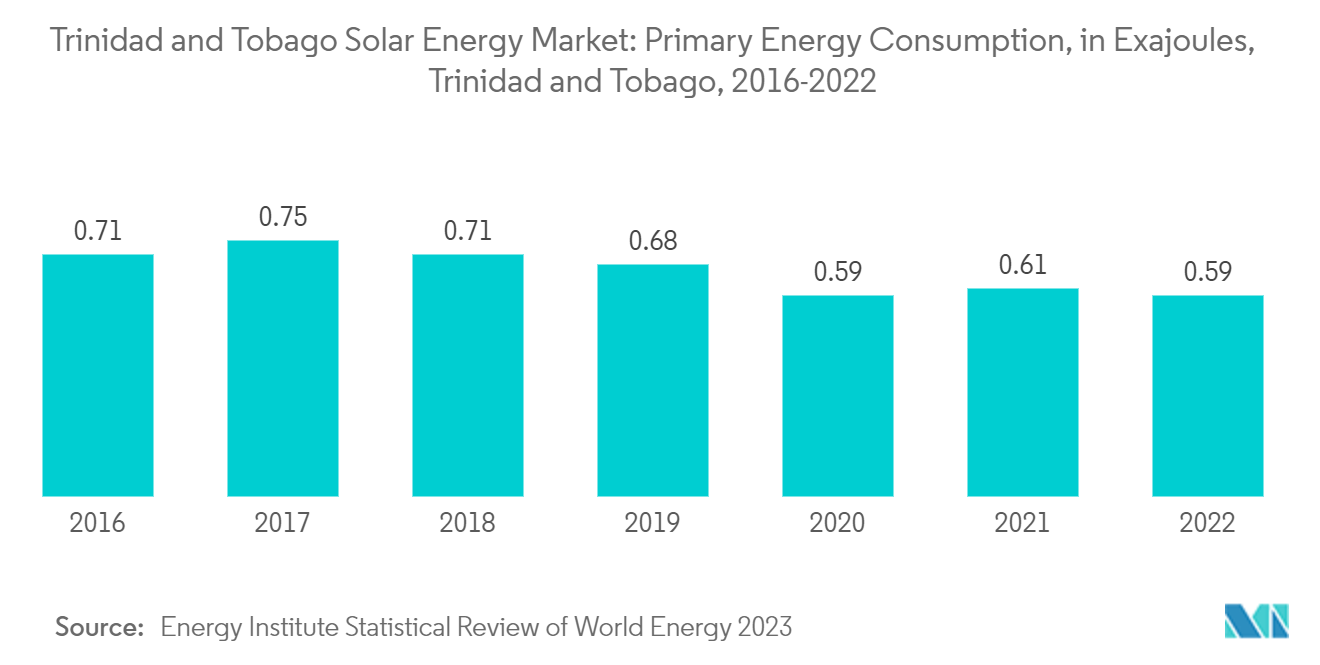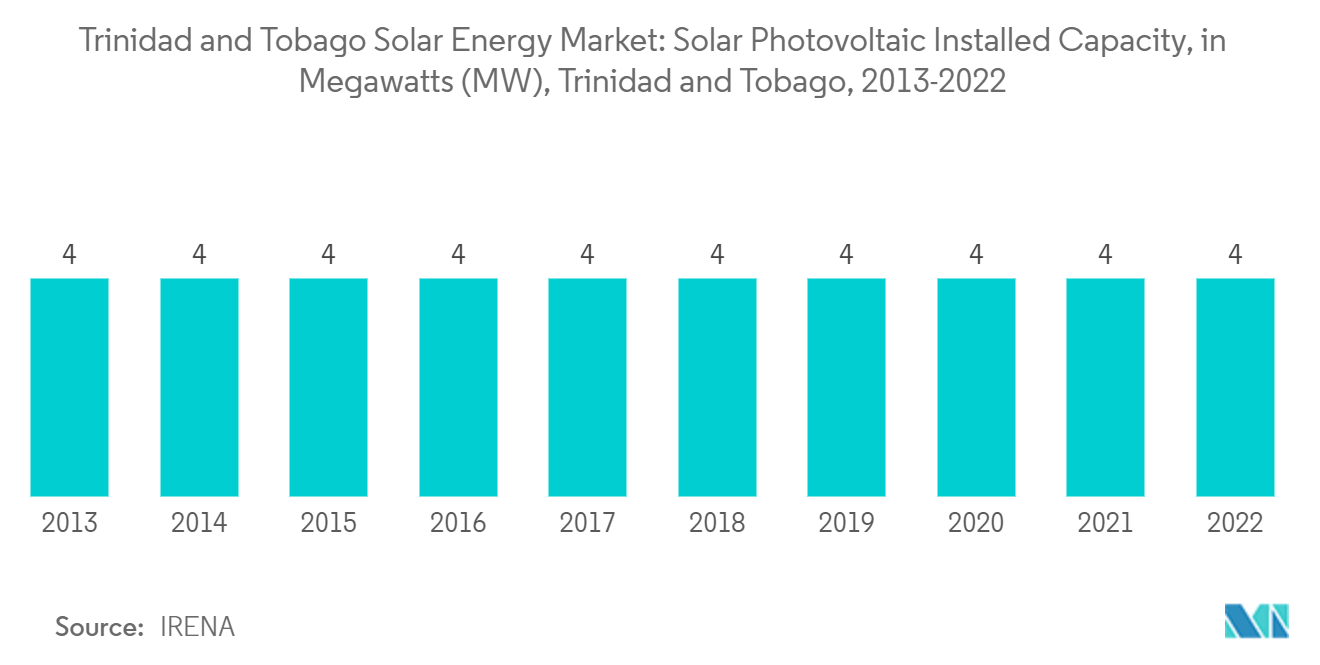Market Trends of Trinidad And Tobago Solar Energy Industry
Increasing Demand for Clean Electricity Generation Expected to Drive the Market
- The electricity generation mix in Trinidad and Tobago is dominated by fossil fuels such as natural gas, coal, and diesel. In 2021, the country's primary energy consumption was around 0.59 exajoules, and in 2021, the country consumed 0.61 exajoules of energy, such as natural gas and oil. The government is making efforts to meet the increasing electricity consumption with cleaner energy sources such as solar.
- Increasing demand for clean and stable energy is expected to be the primary driver for the solar power generation market in the country. The country has been one of the most active countries in the region concerning policies to reduce greenhouse gas emissions and aim toward cleaner energy.
- Rooftop solar offers the benefits of modern electricity services to households with no access to grid electricity. It reduces electricity costs on islands and other remote locations dependent on oil-fired generation and enables residents and small businesses to generate electricity.
- Using local energy sources or distributed generation reduces energy losses due to line loss, i.e., the power lost in the transmission and distribution of electricity over long distances.
- Supporting government initiatives has also aided the country's solar energy market growth. Therefore, the aforementioned factors are expected to drive the market during the forecast period.

Lack of Investments to Restrain the Market
- There has been a significant lack of investments by foreign and domestic companies in the country's renewable energy sector. This has hampered the development of utility-size solar projects in the country. Due to the lack of investments, the country's solar capacity has remained stagnant between 2-4 MW since 2010, and in 2022 also, the installed capacity was around 4 MW.
- Renewable energy projects in Trinidad and Tobago have been limited to the pilot scale. One of the country's huge barriers against renewable energy penetration is the heavily subsidized fuel and electricity that creates an uncompetitive economic environment for renewable energy technologies.
- The electricity generated from fossil fuel sources such as natural gas or oil is comparatively cheaper. In September 2022, the cost of electricity was nearly 0.052 USD per kWh for households and 0.053 USD for businesses, including all components of the electricity bill, such as the cost of power, distribution, and taxes. At the same time, the average price of electricity in the world for the same period is around 0.170 USD per kWh for households and 0.191 USD for businesses. The low prices limit the companies to invest in any other source of electricity within the country.
- Therefore, the lack of investments, particularly in utility-scale solar projects, is expected to be a major restraint for the solar power market in the country.

